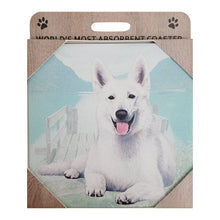How Seasonal Allergies Affect Your Dog And What You Can Do About Them

Scratching, constant licking, and ear infections are just a few common canine allergy symptoms that cause dog owners to switch their pet’s food. But did you know that most allergy symptoms are not food related?
According to Cummings Veterinary Medical Center at Tufts University, the most common cause of itching, skin infections, and ear infections in dogs are due to environmental allergies and fleas. In fact, it’s believed that environmental allergies are responsible for about 90% of allergy symptoms, according to BondVet.
Unfortunately, allergy symptoms can be difficult to discern because food allergies can mimic environmental allergies. But if you’ve tried switching your dog’s food to a limited ingredient diet, have undergone a strict dietary elimination trial, tried a hypoallergenic dog food, gone grain free, or are feeding a novel protein and your pet is still having problems, it is most likely due to environmental allergies.
What Causes Allergy Symptoms in Dogs
Allergy symptoms are caused by an overreaction of your dog’s immune system. When their immune system detects a foreign invader, such as grass pollen, their immune system begins to fight this invader similar to how they would fight a virus or bacteria. Their body then begins to produce histamine and inflammation, which triggers the cycle of miserable symptoms.
With food, this could be a reaction to a protein or rarely a carbohydrate but with environmental allergies, it could be anything in the environment. Some environmental allergy triggers include:
- Tree pollen
- Grass pollen
- Weed pollen
- Molds
- Dust
- Dust mites
- Flea saliva
- Bug bites
- Household cleaners
- Smoke
- Perfume
- Inhalants
Environmental Allergy Symptoms in Dogs
Symptoms of environmental allergies can occur year-round or be seasonal. Which explains why some dogs improve with diet change only to have their symptoms suddenly reappear. Thus, the cycle repeats and owners you may find yourself once again trying to provide relief by switching food.
Symptoms of environmental allergies include:
- Bacterial or yeast infections
- Ear infections and inflammation
- Hot spots
- Red, itchy paws
- Red or darkened skin on the stomach, armpits, and groin
- Rashes or hives
- Runny, red eyes
- Sneezing, runny nose
- Coughing
- Scratching and licking
- Gastrointestinal problems
- Anaphylactic shock (swelling of the face, eyes, mouth, vomiting, diarrhea, breathing problems, collapse-a rare but life-threatening emergency)
Environmental allergies can be tricky because obviously it’s impossible to eliminate all triggers. When diagnosing allergens, most vets will first rule out other potential health problems and then recommend skin and/or blood testing.
What you can do to Help Your Dog’s Environmental Allergies
There are some things you can do to help relieve your dog’s symptoms, which include:
- Keep a symptom log along with pollen and mold information to try to narrow down the trigger to help avoid it by limiting exposure, medicating, or bathing more during those seasons.
- Keep the home and pet’s bedding clean and dust free using hypoallergenic products.
- Change air filters in your home often.
- Feed a high-quality diet that nourishes the skin and coat and helps build the natural skin barrier. German shepherds are prone to skin and stomach sensitives so foods that nourish these areas are important to their overall health.
- Wash away pollens with a gentle shampoo that doesn’t strip your pet’s skin of its natural oils and/or treat any accompanying skin flare ups with appropriate shampoo.
- Use topical treatments to relieve flare-ups, such as creams or sprays.
- Wash pollen off your pet’s face, paws, and belly before bedtime.
- Add probiotics and digestive enzymes to your pet’s meals, which boost the immune system and reduce inflammation.
- Add omega 3 fatty acids to reduce inflammation and support the skin and coat.
- Consider immunotherapy for severe symptoms.
- Talk to your vet about dog friendly antihistamines (never use Sudafed or products with a “D” on the packaging as they are toxic for dogs).
- Consult with your vet regarding prescription medications or the Cytopoint injection.
- Ask for a second opinion or a referral to an integrative vet or dermatology, if you need more help or specialized supplements and food interventions.
Allergies are obviously miserable for dogs but for their owners as well. They can also be costly to treat and diagnose. Figuring out allergy triggers can be frustrating but having a healthy, itch free pet is so worth the effort.
We hope you find these tips helpful. Please feel free to pass along to your friends.
You may also like: Skin Problems In German Shepherds And What You Can Use To Help Relieve Them
























